Note: LIFECYCLE alerts can only be used on machines that have the LIFECYCLE product active.
Alert Actions
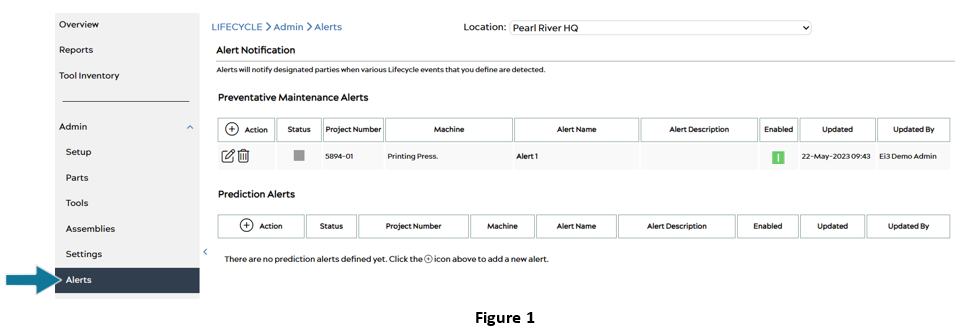
Once an alert has been created, it will display on the main Alerts page (under the Admin dropdown) in a list.
The symbols in the Action column of Figure 1 provide the following functions:
 Create a new alert. See Creating Alerts for more information on alert creation.
Create a new alert. See Creating Alerts for more information on alert creation.  Edit an existing alert.
Edit an existing alert. Delete an alert.
Delete an alert.
The Enabled column displays whether the alert is enabled or disabled. A green box ![]() signifies that the alert is enabled. To enable or disable an alert, see Alerts – Basic Information.
signifies that the alert is enabled. To enable or disable an alert, see Alerts – Basic Information.
Creating Alerts
![]() There are two kinds of alerts that you can create for LIFECYCLE:
There are two kinds of alerts that you can create for LIFECYCLE:
- Preventative Maintenance Alerts
- Prediction Alerts
From the menu, select LIFECYCLE > Alerts (under Admin). Select the ![]() icon under the Action column (see Figure 1) to create a new alert.
icon under the Action column (see Figure 1) to create a new alert.
Select Alert Type
Choose a type of alert to add, either the Preventative Maintenance Alerts or Prediction Alerts.
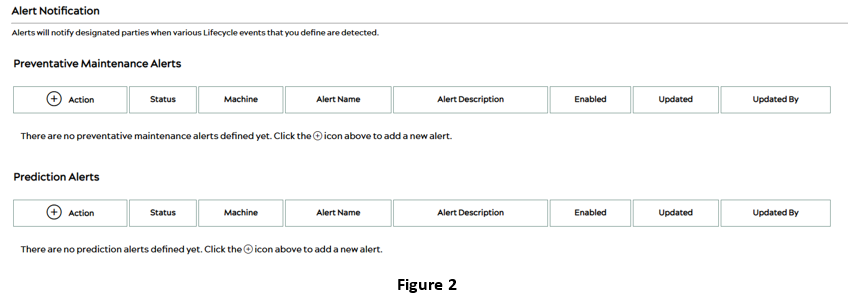
After selecting the Action icon ![]() , a new page named Add Alert Notification will be displayed with areas labeled Basic Information, Options, Predictions, Schedule, and Recipients.
, a new page named Add Alert Notification will be displayed with areas labeled Basic Information, Options, Predictions, Schedule, and Recipients.
Basic Information
The first section of the Add Alert Notification page is called Basic Information. Here, users can enter alert information, select a machine, or choose to enable/disable the alert.
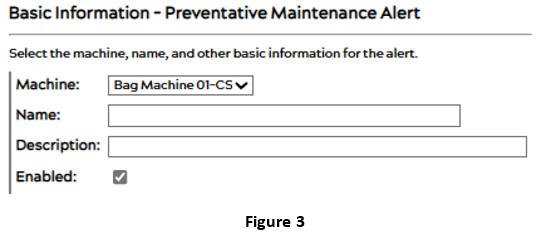
Options
The first section of the Add Alert Notification page is called Options. Here, users can specify alert options – alert frequency, number of alerts, language, and more.
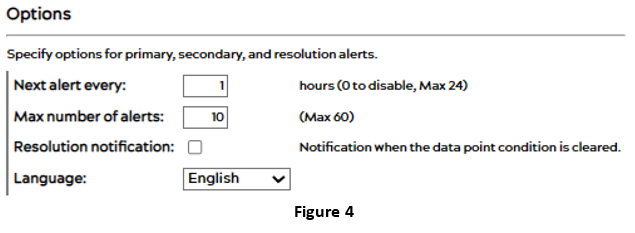
Predictions
Alerts can be triggered by specific conditions or multiple conditions. It is important to set prediction alerts so that users are notified before their parts reach critical condition, overall reducing order lead times for spare parts.
Users can select the condition each part must reach to be alerted and can set this up under the Predictions section of the Add Alert Notification page. For Preventative Maintenance Alerts, alerts are set based on the parts and maintenance items. An example of that is shown in Figure 5 below:
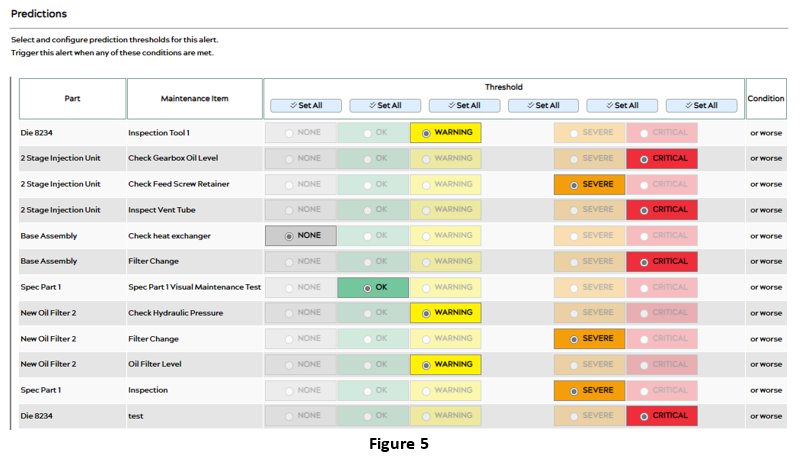
For Prediction Alerts, alerts are set based on the parts and maintenance items. An example of that is shown in Figure 6 below:

Alerts Schedule
Users can choose a time period during which alerts should be sent out. For instance, if a machine runs only five days a week and alerts should not be sent out on weekends, configure the Schedule section to match the machine run times. By adding Actions, users can choose a Start Day and Time, as well as an End Day and Time for each of their alerts.
This can be done under the Schedule section of the Add Alert Notification page. The chosen times for alerts are then displayed in a weekly schedule as seen below in Figure 7:

Recipients
Users can add alert recipients under the Recipients section of the Add Alert Notification page, which is the final section. Email, SMS / text and web / mobile alerts are supported; text messaging fees may apply.
Once completed, users must hit the Save icon ![]() at the bottom of the page to save the alert.
at the bottom of the page to save the alert.
Not receiving an alert? Read about Alert Status Information to ensure your alert is properly set up.


